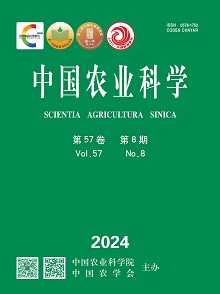【Objective】Frequent spring drought and excessive application of nitrogen (N) fertilizer would hinder maize seedling growth and development, and may negatively affect plant growth during middle-late periods and final grain yield. This study was conducted to determine the effects of localized supply of N fertilizer on maize seedling growth, root morphology, water and N utilization under drought stress conditions, ait of nitrogen inputs on graming to provide a technical basis for promoting root development, improving water and N use efficiencies, and achieving high and stable yields in maize production.【Method】The split-root pot experiments with different water and N levels were conducted in 2021 and 2022. Five N supply patterns were designed: no N supply (N0/N0), uniform low N supply (LN/LN), localized low N supply (LN/N0), uniform high N supply (HN/HN), and localized high N supply (HN/N0). The N rates were 0.12 and 0.24 g N·kg-1 dry soil for LN and HN levels, respectively. Water management was initiated from 3-leaf stage and lasted for 3 weeks, including three soil moisture content: severe water-stress (35% of field capacity, W0), moderate water-stress (55% of field capacity, W1), and well-watered conditions (75% of field capacity, W2). At the end of the water management period, plant growth traits, shoot dry matter (DM), shoot N uptake, root DM, root length, and water and N use efficiency (WUE, NUE) were measured. 【Result】 The water stress significantly limited plant growth, DM accumulation, and N uptake in maize seedlings, but increased root shoot ratio. Compared with W2, the total root length under W0 was reduced by 48.0%, while the effects were relatively less under W1. The water stress reduced NUE in maize, with average decreases of 10.1 and 4.6 percentage points under W0 and W1, respectively, compared to W2, and the WUE was decreased by 19.4% under W0 and increased by 11.9% under W1. The N supply patterns also significantly affected plant growth, DM accumulation, N uptake and utilization in maize seedlings, and the two factors of water and nitrogen showed significant interaction. Based on the results obtained in 2022, the highest shoot DM was observed in LN/LN, and which were 8.3%, 12.6% and 23.6% higher than those in N0/N0 under W0, W1 and W2, respectively. Nevertheless, the highest root DM was observed in LN/N0, with the increases of 9.5%, 17.0%, and 31.2% higher than that in N0/N0 under the three water levels. Moreover, the LN/N0 increased significantly root﹕shoot ratio under both W1 and W2. The HN/HN had the most severe negative impacts on maize seedling growth, with 30.1%, 14.6%, and 7.0% lower shoot DM as compared with N0/N0 under W0, W1 and W2, respectively. The larger decreases in root DM (41.0%, 44.2% and 34.9%, respectively) were observed in HN/HN, thus resulting in significant reductions in root﹕shoot ratio. The HN/N0 showed a relatively less effect on shoot DM, but significantly reduced root DM and root﹕shoot ratio. Compared with N0/N0, both HN/HN and HN/N0 resulted in significant decreases in root length, whereas LN/N0 significantly increased total root length by promoting root proliferation on the side without N supply. The application of N fertilizer significantly increased plant N uptake, with higher value in LN/LN but lower in LN/N0 across all water levels. With regard to NUE, which was higher in LN/LN while lower in HN/HN. The differences in N uptake and NUE among treatments increased with reducing water stress levels. Both plant water consumption and WUE were higher in LN/LN and LN/N0, followed by HN/N0, whereas the lowest values were observed in HN/HN. Compared with N0/N0, uniform or localized low N supply showed promoting effects on maize seedling growth, while uniform or localized high N supply had negative effects that intensified with increasing water stress levels. Overall, localized N supply had a greater effect on root growth relative to uniform N supply, inducing a morphological plasticity response in the root system. The correlation analysis results indicated that shoot DM, WUE and NUE had positive and significant relationships with total root length of maize seedlings across different water levels and N supply patterns. For the localized N supply treatments, the correlation between root length on the side without N supply and shoot DM, WUE and NUE was higher.【Conclusion】In comparison to uniform N supply, the localized N supply effectively promoted root proliferation on the side without N supply during maize seedling stage, resulting in increased root DM and total root length. Hence, the localized supply with a lower N rate was recommended to enhance drought tolerance of maize seedlings and improve WUE.











